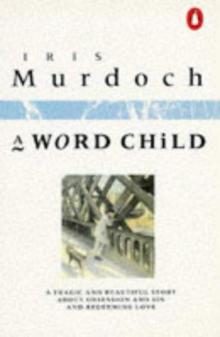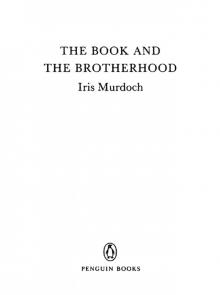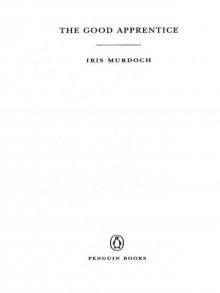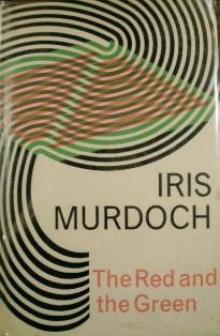- Home
- Iris Murdoch
Metaphysics as a Guide to Morals
Metaphysics as a Guide to Morals Read online
Table of Contents
ABOUT THE AUTHOR
Title Page
Copyright Page
Dedication
Epigraph
Chapter 1 - Conceptions of Unity. Art
Chapter 2 - Fact and Value
Chapter 3 - Schopenhauer
Chapter 4 - Art and Religion
Chapter 5 - Comic and Tragic
Chapter 6 - Consciousness and Thought — I
Chapter 7 - Derrida and Structuralism
Chapter 8 - Consciousness and Thought — II
Chapter 9 - Wittgenstein and the Inner Life
Chapter 10 - Notes on Will and Duty
Chapter 11 - Imagination
Chapter 12 - Morals and Politics
Chapter 13 - The Ontological Proof
Chapter 14 - Descartes and Kant
Chapter 15 - Martin Buber and God
Chapter 16 - Morality and Religion
Chapter 17 - Axioms, Duties, Eros
Chapter 18 - Void
Chapter 19 - Metaphysics: a Summary
Acknowledgements
Index
PENGUIN BOOKS
METAPHYSICS AS A GUIDE TO MORALS
‘Metaphysics as a Guide to Morals is a prodigious roller-coaster of a book, a journey through philosophy, religion, literature, art – less a guide than a gigantic survey, a mapping, providing readers with the means to find their own ways ... I know of no other writer who could have covered such large areas with such authority, nor had the courage to treat fashion with such disdain’
– Nicholas Mosley in the Daily Telegraph
‘Physic is medicine and Iris Murdoch offers good medicine ... Her book is lively, witty and spell-binding, written by a sleuth on the trail of the meaning of Life’
– Peter Mullen in the Daily Mail
‘A large, elaborate and visionary philosophical essay ... richly stimulating ... this is a significant book, lambent with insights, intelligence, and profound concern’
– A. C. Grayling in the Financial Times
‘Metaphysics as a Guide to Morals is really a much needed Guide to Life. “Good is the reality of which God is the dream” is a line of simple beauty, distilling philosophical insight into purest poetry’
– Josephine Hart in the Sunday Express
‘It is a great congested work, a foaming sourcebook, about life, imagination, tragedy, philosophy, morality, religion and art’
— Galen Strawson in the Independent on Sunday
ABOUT THE AUTHOR
Iris Murdoch was born in Dublin in 1919 of Anglo-Irish parents. She went to Badminton School, Bristol, and read classics at Somerville College, Oxford. During the war she was an Assistant Principal at the Treasury, and then worked with UNRRA in London, Belgium and Austria. She held a studentship in philosophy at Newnham College, Cambridge, and then in 1948 became a Fellow of St Anne’s College, Oxford, where she lived with her husband, the teacher and critic John Bayley Awarded the CBE in 1976, Iris Murdoch was made a DBE in the 1987 New Year’s Honours List. In the 1997 PEN Awards she received the Gold Pen for Distinguished Service to Literature.
Iris Murdoch wrote twenty-six novels, including Under the Net, her writing début of 1954, the Booker Prize-winning The Sea, the Sea (1978) and, more recently, The Green Knight (1993) and Jackson’s Dilemma (1995). She received a number of other literary awards, among them the James Tait Black Memorial Prize for The Black Prince (1973) and the Whitbread Prize for The Sacred and Profane Love Machine (1974). Her works of philosophy include Sartre: Romantic Rationalist, Metaphysics As a Guide to Morals (1992) and Existentialists and Mystics (1997). She also wrote several plays, including The Italian Girl (with James Saunders) and The Black Prince, an adaptation of her novel. Her volume of poetry, A Year of Birds, which appeared in 1978, was set to music by Malcolm Williamson.
Iris Murdoch died in February 1999. Among the many who paid tribute to her as a philosopher, novelist and private individual was Peter Conradi, who in his obituary in the Guardian wrote ‘Iris Murdoch was one of the best and most influential writers of the twentieth century. Above all, she kept the traditional novel alive, and in so doing changed what it is capable of ... She connected goodness, against the temper of the times, not with the quest for an authentic identity so much as with the happiness that can come about when that quest is relaxed. We are fortunate to have shared our appalling century with her.’
PENGUIN BOOKS
Published by the Penguin Group
Penguin Group (USA) Inc., 375 Hudson Street, New York, New York 10014, U.S.A.
Penguin Group (Canada), 90 Eglinton Avenue East, Suite 700, Toronto,
Ontario, Canada M4P 2Y3 (a division of Pearson Penguin Canada Inc.)
Penguin Books Ltd, 80 Strand, London WC2R 0RL, England
Penguin Ireland, 25 St Stephen’s Green, Dublin 2, Ireland
(a division of Penguin Books Ltd)
Penguin Group (Australia), 250 Camberwell Road, Camberwell,
Victoria 3124, Australia (a division of Pearson Australia Group Pty Ltd)
Penguin Books India Pvt Ltd, 11 Community Centre, Panchsheel Park,
New Delhi – 110 017, India
Penguin Group (NZ), 67 Apollo Drive, Mairangi Bay, Auckland 1311,
New Zealand (a division of Pearson New Zealand Ltd)
Penguin Books (South Africa) (Pty) Ltd, 24 Sturdee Avenue, Rosebank,
Johannesburg 2196, South Africa
Penguin Books Ltd, Registered Offices: 80 Strand, London WC2R 0RL, England
First published by Chatto and Windus 1992
Published in Penguin Books 1993
Copyright © Iris Murdoch, 1992
All rights reserved
The acknowledgements on pp. 513-14 constitute an extension to this copyright page
eISBN : 978-1-101-49579-7
This book is based on the 1982 Gifford Lectures given at the University of Edinburgh
The scanning, uploading and distribution of this book via the Internet or via any other means without the permission of the publisher is illegal and punishable by law. Please purchase only authorized electronic editions, and do not participate in or encourage electronic piracy of copyrighted materials. Your support of the author’s rights is appreciated.
http://us.penguingroup.com
To
Elizabeth Anscombe
Une difficulté est une lumière.
Une difficulté insurmontable est un soleil.
PAUL VALÉRY
1
Conceptions of Unity. Art
The idea of a self-contained unity or limited whole is a fundamental instinctive concept. We see parts of things, we intuit whole things. We seem to know a great deal on the basis of very little. Oblivious of philosophical problems and paucity of evidence we grasp ourselves as unities, continuous bodies and continuous minds. We assume the continuity of space and time. This intuitive extension of our claim to knowledge has inspired the reflections of many philosophers. Hume, who was sceptical about this universal tendency, was prepared to say that some of our most cherished unities, the self, the material object, were illusions fostered by imagination, by association of ideas, by ‘habit and custom’. He admitted that the notion was repugnant to common-sense, not easily entertained outside the philosopher’s study even by the philosopher. On the other hand, the strength of our resistance was an aspect, even a proof, of the thing itself; continuous experience provides an orderly world and there is no need for us laymen to worry about ‘deep foundations’. Hume combined a radical scepticism with a benignly tolerant worldly wisdom. If a fiction is necessary enough, it is not a lie. Kant was upset by Hume’s account. He thought that it undermined scientif
ic thinking and the theoretical and moral claims of human reason. Psychological associations and habits could not constitute the bases of our existence, something deeper and more radically necessary was required. We could not infer reality from experience when the possibility of experience itself needed to be explained. The urge to prove that where we intuit unity there really is unity is a deep emotional motive to philosophy, to art, to thinking itself. Intellect is naturally one-making. To evaluate, understand, classify, place in order of merit, implies a wider unified system, the questing mind abhors vacuums. We fear plurality, diffusion, senseless accident, chaos, we want to transform what we cannot dominate or understand into something reassuring and familiar,. into ordinary being, into history, art, religion, science. This subject or problem interests us now because the ‘pluralisation’ or ‘demythologisation’ of history, art, religion, science, which is characteristic of our age, largely takes the form of an analysis of old and prized unities and deep instinctive beliefs thought to be essential to human nature. Wittgenstein says that philosophy ‘leaves everything as it is ... Philosophy simply puts everything before us, and neither explains nor deduces anything.’ (Philosophical Investigations 124, 126.) This degree of moderation is unusual. A physicist may succeed in reassuring us that his discoveries do not in any way discredit ordinary beliefs. But philosophers do usually intend to persuade us of something, and this is true at times of Wittgenstein too. Philosophy and science and theology have always been to some degree iconoclastic, and the ‘everyday outlook’ or ‘natural standpoint’ undergoes historical change. How much it changes many voices now tell us, how little it changes can be learnt from reading Homer. Where philosophy is concerned this change has taken place in a perspective (against a horizon) which goes back as far as the Greeks. We are now being told (for instance by Nietzsche, Heidegger, Derrida) that this horizon has been, to use Nietzsche’s phrase, ‘sponged away’, and that the era, not only of Descartes, but also of Plato, has ended and some entirely new mode of thinking is coming to be. I wish in what follows to study this situation, first of all in relation to the concept of the work of art.
The concept of ‘art object’ or ‘work of art’ has a force which goes far beyond what we usually think of as ‘art’. All sorts of things have ‘aesthetic aspects’, but what I have in mind is the traditional concept (now under attack) of the unified work of art. A work of art is of course not a material object, though some works of art are bodied forth by material objects so as to seem to inhere in them. In the case of a statue the relation between the material object and the art object seems close, in the case of a picture less so. Poems and symphonies are clearly not material objects. Works of art require material objects to keep them continuously available (our memories fade) and some require performance by secondary artists. All art objects are ‘performed’ or imagined first by the artist and then by his clients, and these imaginative and intellectual activities or experiences may be said to be the point or essence of art. In ordinary life, unshadowed by philosophy, all sorts of things are said to exist ‘in the mind’ or ‘only in the mind’, and there may be various bases and explanations of such phrases. Art, however, essentially (traditionally) involves the idea of a sustained experienced mental synthesis. If with great expectation, I stand before the picture and, perhaps because I cannot banish my troubles, ‘nothing happens’, then something has gone wrong, something which was the point is absent, our sensibility has not been unified. Hearing sounds is not hearing a symphony unless we hear it as a symphony. We perceive a work of art, and also understand the command ‘see it as a work of art’. The enjoyed, or achieved, art object is likely too to differ, in the experience of even the most sophisticated clients, to an extent which even the minutest critical language can scarcely uncover. The claim of the artist himself to have performed it ‘best’ or ‘rightly’ may be disputed and is hard to state. The accessible existence of art, its ability to hang luminously in human minds at certain times, depends traditionally upon an external being, a fairly precise and fixed sensory notation or ‘body’, an authority to which the client intermittently submits himself. If this notation is or becomes unavailable the work of art is lost: the picture is burnt, no reproduction does it justice, the papyrus is never given up by the sands of Egypt. Art experience then is something that we can self-evidently and identifiably have or enjoy, in various ways with various material. This ability to sustain and experience imagined syntheses has importance in other areas where we make use of analogous or related conceptions of authoritative limited wholes.
The idea of attention or contemplation, of looking carefully at something and holding it before the mind, may be conveyed early on in childhood. ‘Look, listen, isn’t that pretty, isn’t that nice?’ Also, ‘Don’t touch!’ This is moral training as well as preparation for a pleasurable life. It need not depend on words, but can also be learnt from patterns of behaviour which should in any case back up the words. The far-reaching idea of respect is included in such teaching. The, as it might seem, sophisticated concept of a work of art may be acquired easily. Children, if they are lucky, are invited to attend to pictures or objects, or listen quietly to music or stories or verses, and readily understand in what spirit they are to treat these apparently dissimilar things. They may also be encouraged to contemplate works of nature, which are unlike works of art, yet also like them in being ‘beautiful’. There are many harmoniously unified forms in nature, but our pleasure here is not always a search for ‘objects’, but may be a delight in limitless continuation or accumulation or chaos: mountains, waterfalls, forests, the sea, the sky. Kant even saw this experience of ‘the sublime’ as having a superior spiritual function as contrasted with enjoyment of the ‘beauty’ of limited forms. The defeat of a presupposed expectation of unity may be itself a pleasure, and is indeed an old and instinctive aesthetic device. Music which pleases by doing what we expect (‘coming home’) may also please us by failing to do so. Artists have been regarded as seers and prophets. Art does indeed register or picture, sometimes prophetically, the movement of the Zeitgeist. The way we grasp the world changes, and the artist knows first, like the animals whose behaviour foretells an earthquake.
The art object has attracted, intermittently, the attention of philosophers. Hegelian idealism took the mentally sustained organic unity of the work of art not only as a paradigm but as a touchstone: the more highly organised, the more real. Analytical empiricists have more recently been interested, not in the old question of what is good art, but in the question of what art is, a question of which art itself has become increasingly conscious. (Poets write about the nature of poetry, novelists about people writing novels.) This shift of interest, of which structuralist criticism (deconstruction) is one aspect, is a symptom of a more critical, more technological and generally less idolatrous attitude. There are many deep reasons for this coolness. It is felt that traditional western art is too grand and too out of touch with the awful, and also the banal, details of life, which (incidentally) television can display with such exquisite technical perfection. The mood of existentialism favoured sincere expressions of feeling or attitude rather than meticulous statements masquerading as objects; and the mood of the new ecological and social utilitarianism can find the artificiality of art frivolous in a suffering world. We should reflect here upon the durability and value of utilitarian moral philosophy as an independent stream of thought. The images of nuclear warfare, or ecological disaster, productive of fear, pessimism, cynicism, also doubtless affect our thoughts about art and make Hegelian and romantic theorising seem remote. In practice Marxist states used enslaved art as propaganda. In theory some Marxist aestheticians, in the spirit of Lukács, defended some continuation of traditional art as ‘true realism’; while others, in the Utopian spirit of early Marx, pictured art as scattered spontaneous expressions of social solidarity, rather than as the production of formal individual works. Lukács and Marcuse here give way to William Morris. Many of these critical attitudes are g
athered up by structuralism, which shares with Marxism a reaction against Victorian confidence and grandeur (large pictures, long novels) and in general against ‘bourgeois values’. Structuralism more particularly expresses a new consciousness of language, a metaphysic which offers a new model of language as the structure of reality. By ‘structuralism’ I mean here the movement promoted by Jacques Derrida, also called ‘deconstruction’, ‘modernism’, ‘post-modernism’, etc. I use the old original term as it is informative and less ephemeral. (After all, what comes after post-modernism?) Strictly perhaps it should be called ‘Derrida’s structuralism’, to distinguish it from other post-Saussure theories in semiotics and semiology which use the idea of structure. This doctrine is presented as a sort of morally neutral science, in a manner analogous to the way in which Husserl presented his theory, but with a new understanding of science, the languages of science, and of the place of language generally. Here linguistics and anthropology appear as mediators between philosophy and a comprehensive ‘human science’. Structuralism may also be seen in its more popular manifestations as a new sensibility in art, an attack on traditional art forms, where it operates both as an exercise in, and an image of, demythologisation, the removal of the transcendent: a removal which analyses (deconstructs) the familiar concepts of individual object, individual person, individual meaning, those old and cherished ‘limited wholes’. Here we may readily see our painters as our prophets. A simple image is that of impressionism, first perceived as a chaotic mass of lines and colours, repugnant to its clients, but now so thoroughly absorbed that it is hard to imagine that impressionist pictures were ever difficult to ‘read’. The impressionist is of course not a demythologising ‘monist’; he authoritatively asserts the presence of the transcendent object. As things, landscapes, persons, entities. Cubism is a positive search for the object. Self-declared abstract painting (Mondrian illustrates stages on this way) has long remained happily, more or less secretively, obsessed with the transcendent, which however has increasingly posed itself as a problem. This awareness has been, one might say, the secret which inspires the artist. Can it diminish to vanishing point? Many essays in anti-art art seem anxious to prove that it can. Art’s old natural tendency to ‘point beyond’ is variously and ingeniously challenged by artists more conscious of their prophetic role. The object is not ‘pictured’, it is, just as itself, presented: the kettle, the chair, the Coca-Cola can, the pile of bricks, the revoltingly contingent. The client must then do the work.

 Jackson's Dilemma
Jackson's Dilemma The Flight From the Enchanter
The Flight From the Enchanter The Red and the Green (Vintage Classics)
The Red and the Green (Vintage Classics) A Severed Head
A Severed Head The Black Prince
The Black Prince The Nice and the Good
The Nice and the Good The Unicorn
The Unicorn Under the Net
Under the Net The Italian Girl
The Italian Girl A Fairly Honourable Defeat
A Fairly Honourable Defeat An Accidental Man
An Accidental Man A Word Child
A Word Child The Philosopher's Pupil
The Philosopher's Pupil The Book and the Brotherhood
The Book and the Brotherhood The Good Apprentice
The Good Apprentice The Sacred and Profane Love Machine
The Sacred and Profane Love Machine The Bell
The Bell Henry and Cato
Henry and Cato Metaphysics as a Guide to Morals
Metaphysics as a Guide to Morals The Time of the Angels
The Time of the Angels Nuns and Soldiers
Nuns and Soldiers The Green Knight
The Green Knight The Sea, the Sea
The Sea, the Sea Sartre: Romantic Rationalist
Sartre: Romantic Rationalist Bruno's Dream
Bruno's Dream An Unofficial rose
An Unofficial rose Sartre
Sartre The Red and The Green
The Red and The Green